#mantra Vam
Text

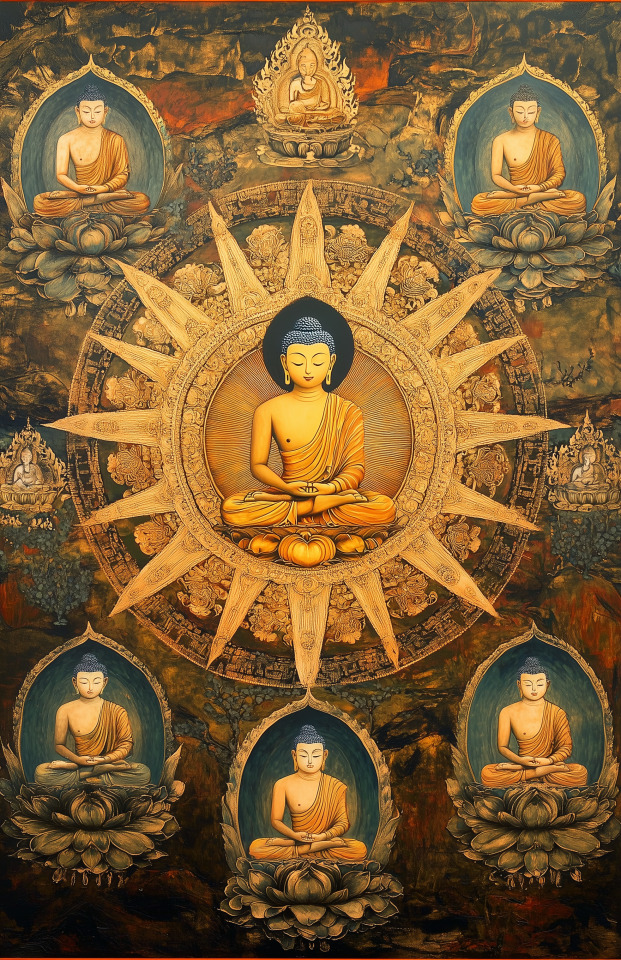
Vairocana | The Five Wisdom Buddhas
Talon Abraxas
Not all Buddhas were considered flesh and blood or walked the earth. The Five Wisdom Buddhas are the Wisdom states as persons. The body of Vairocana is the body of the True Dharma.
The Five Wisdom Buddhas arose during the Mahayana development in India and were taken up by Tantric Buddhism. In Japan they appear in Shingon. These Buddhas differ from the Buddhas who appear in the lineage or who are said to have walked the earth at a certain time in a certain place as they represent principles of Mahayana teaching. They are sometimes called ‘Meditation Buddhas’ to distinguish them and because they may only be encountered in the states of meditation that form their bodies.
Vairocana is called the ‘Sun Buddha’ and is the ‘First’ (Skt. Adi) or ‘Primoridial’ Buddha and sits in the central place of the Five Wisdom Buddhas mandala surrounded by the four other Wisdom Buddhas who sit at the cardinal points. His name in Japanese is Dainichi Nyorai – The Buddha of Universal Illumination. His names and attributes are all connected with light and illumination, rays of life-giving power that initiate, nourish and sustain as the sun does all life on earth.
In Mahayana teaching his body is the Body of the Dharma (Skt. Dharmakaya), and is synonymous with such terms in Zen as ‘True Nature’, ‘True Face’ and ‘Buddha-nature’. His nature is emptiness (Skt. Sunyata), the ‘unborn’ of which the Buddha spoke in the Pali Canon, without which that which is born and created could not come into being.
Vairocana first appeared in the Brahmajala Sutra, a 5th Century manuscript written in Sanskrit and translated into Chinese by Kumarajiva. The title translates into English as Brahma’s Net Sutra. This relates to the analogy used by the Buddha who described a net that spreads throughout the universe in the three dimensions of space: length, breadth and depth. Where three strands meet there is a jewel to hold them in place like a dewy spider’s web. Each jewel reflects both itself and all the other jewels in the net simultaneously. The feel of this image is used to point towards the reality of emptiness, the true nature of the Dharmakaya – which is the body of Vairocana.
“Now, I, Vairocana Buddha, am sitting atop a lotus pedestal; on a thousand flowers surrounding me are a thousand Sakyamuni Buddhas. Each flower supports a hundred million worlds; in each world a Sakyamuni Buddha appears. All are seated beneath a Bodhi-tree, all simultaneously attain Buddhahood. All these innumerable Buddhas have Vairocana as their original body. “
-The Brahma’s Net Sutra
As the primordial principle Vairocana speaks outside the phenomenal world where all time is simultaneous. Although in the phenomenal world he has this or that name and is portrayed using this or that hand position (mudra), wearing certain garments and headdress, in truth he is beyond conceptual imagination and yet is ever present in each form, as Master Hakuin wrote: ‘‘like salt in seawater or glue in paint.”
In Shingon Buddhism he is represented by the Sanskrit letter ‘A’ which expresses life & death; emergence & return.
The mantra associated with Vairocana is:
Om a-vi-ra-hûm-kham vajradhâtu vam (Skt.)
Om All Pervading One; Imperishable One
72 notes
·
View notes
Text
New Year's Chakra Advice
Coming into this new year, I would like to aid in everyones spiritual journeys by providing a little info for those who need it. The following will help you figure out which of your chakras are misaligned, and how to realign them.
Root (Muladhara) Chakra
When in alignment:
Grounded, centered, calm, sense of safety, trust in objects around self
When out of alignment:
Ungrounded, disconnected, fear, weight problems, money problems, rigidness
To bring into alignment:
Connect with Earth and nature, grounding activities, physical activity, red crystals, -LAM mantra
Sacral (Scadhisthana) Chakra
When in alignment:
Creative, energetic, joyful, playful, passionate, open, honest, forgiving, sexuality
When out of alignment:
Abdominal pain, withdrawal and isolation, manipulation, aggression, codependence
To bring into alignment:
Emotional reflection, creativity, swimming, uplifting affirmations, orange crystals, -VAM mantra
Solar Plexus (Manipura) Chakra
When in alignment:
Confidence, positivity, high self-esteem, driven, motivated, positive self image
When out of alignment:
Low self-esteem, lack of ambition, feeling worthless, sensitive to criticism, lack of purpose
To bring into alignment:
Positive affirmations, be in the sunlight, change your mindset to empower yourself, yellow crystals, -RAM mantra
Heart (Anahata) Chakra
When in alignment:
Loving, caring, compassionate, unconditional love, connected to others, kindness, empathy
When out of alignment:
Depression, loneliness, feeling unloved/unlovable, selfishness, spite, jealousy
To bring into alignment:
Gratitude activities, empowering affirmations, establish boundaries, green crystals, -VAM mantra
Throat (Vishuddha) Chakra
When in alignment:
Clear communication, honesty, expressive, decisive, speaks with clarity and confidence
When out of alignment:
Shyness, withdrawn, difficulty expressing self, indecisive, dishonest, poor socializing
To bring into alignment:
Neck massage, vocal activities, recording feelings and thoughts, saying no, blue crystals, -HAM mantra
Third Eye (Ajna) Chakra
When in alignment:
Intuitive, imaginative, open-minded, insightful, trusting
When out of alignment:
Lack of intuition, unimaginative, close-minded, lack of insight, distrusting, paranoia, difficulty concentrating
To bring into alignment:
Explore new ideas, meditation, visualization activities, mindfulness, indigo crystals, -OM mantra
Crown (Sahasrara) Chakra
When in alignment:
Spiritual, enlightened, focused, divine peace, connected to self and higher power, trust in inner knowing
When out of alignment:
Cynical, close-minded, disconnected from self and higher power, unfocused, scattered, forgetful
To bring into alignment:
Meditation, spiritual practices, prayer, divination, violet and white crystals, -OM mantra
#divination#spirituality#spiritual development#spiritual knowledge#spiritualjourney#spiritualgrowth#spiritual awakening#chakras#muladhara#root chakra#sacral chakra#scadhist#scadhisthana#solar plexus chakra#manipura#heart chakra#anahata#throat chakra#vishuddha#third eye chakra#ajna#crown chakra#sahasrara#new year
24 notes
·
View notes
Text
A few things I've been thinking about and find subtle links to Death Stranding
Chakras and Death Stranding
This text has content that I took from a book of Reiki handouts that my mother has, so the view of Chakras here is from the viewpoint of Reiki practice.
Chakras are round energy centers and in the East they are seen as whirlpools of energy, little cones (funnels) of spinning energy. They are large, shiny and translucent and, in normal human beings, have a diameter of five to ten centimeters, reaching 20 centimeters in diameter in spiritually developed people.
The size of the Chakras varies according to our energy and spiritual development and can vary according to the individual's energy (positive or negative energy). And each Chakra resonates with a color that derives from its vibration frequency. Each one vibrates with a sound or mantra that corresponds to a musical note and also relates to a natural element: earth, water, fire, air and ether.
In the Oriental view, each Chakra is represented by petals like flowers, depending on the complexity of each one. Ancient writings mention that we have up to 88,000 Chakras throughout our bodies, in other words, we have countless energetically sensitive points, but most of them play a secondary role.
But let's just talk about the 7 main Chakras through which the human aura is connected.

source
The Chakras are responsible for the energy flow in the human body and their main function is to absorb prana, which is the energy coming from the Sun, metabolize it, feed our aura and, finally, emit energy to the outside.
Knowing this, let's talk about Death Stranding, we know that Sam, when he dies in his baby phase, is repatriated by Amelie in his Beach. Amélie "seals" Sam's body with a mark and brings him back to life, causing Sam to gain a peculiar scar and live around without a navel. We're talking about the Umbilical/Sacral Chakra here, and according to the Reiki view this is the second Chakra.
We're going to talk about the other two Chakras that, for me, were also "affected" by the repatriate/shot mark, but let's start with the Umbilical Chakra first.

Name: Svadhishthana
Location: Navel area
Color: Orange
Auric body: Emotional
Element: Water
Music note: D
Mantra: Vam
Number of petals: 6
This chakra is for the propagation of the species, in other words, reproduction. Its correct activity makes us love life. It is the Chakra that concentrates the qualities that have to do with sexuality, curiosity, the creative search for material pleasure, a taste for beautiful things, art, emotions and relationships with other people. This chakra is the seat of fears, ghosts and negative fantasies linked to sexuality and behavior towards another sex. If it malfunctions, it can turn life into a small personal "hell" which ends up being reflected in the people we live with and relate to.

Blockages in this Chakra usually result in physical symptoms such as illnesses related to body fluids (larynx, lymph, saliva, bile). Blockages in the sexual center often result in mental symptoms such as fear of physical proximity and disgust for the body, a mania for cleanliness, incomprehension, a mind that is too focused on reason, an excessive emphasis on impulsive feelings, rhythmic disorders, isolation, frigidity, impotence, lack of sexual appetite, fear of falling.
This Chakra together with the first are important and if they function incorrectly the other Chakras won't be able to function properly either.
I could say that due to the size of the damage caused by the shot, not only the Umbilical/Sacral Chakra was affected, but also the Base Chakra(#1) and the Solar Plexus(#2), because all three are located exactly in the center of our body's balance.
So let's look at a basic summary of the other two Chakras (first and third) to complete the analysis.
-> Basic Chakra (first)
Name: Muladhara
Location: Base of the spine
Colors: Red and black
Auric body: Etheric and physical
Element: Earth
Musical note: C
Mantra: Lam
Number of petals: 4
It lies between the anus and the sexual organs, on the line of the pelvic girdle. This chakra is open downwards and represents the human being's connection with planet Earth, with the material and physical world. It is linked to our earthly existence, our survival. The more open and elevated this Chakra is, the higher our physical energy (disposition) will be.
-> Solar Plexus Chakra (third)
Name: Manipura
Location: Mouth of stomach
Color: Yellow
Auric body: Mental
Element: Fire
Musical note: E
Mantra: Ram
Number of petals: 10
It represents the personality and concentrates the qualities of the rational and personal mind, vitality, the will to know and learn, the action of power, the desire to live, communicate and participate. It is the point of connection with other people. This Chakra is the one most closely related to our ego and therefore absorbs a lot of energy from the first two Chakras.
In summary, I find it interesting how I could find a little sense in the location of the Chakras in relation to Sam's injury, and in relation to what the mark of the repatriate represents for him. I don't know if Kojima did this consciously, but there is something that makes sense, for sure.
The center of the human body (CORE)
One of the funniest things for me was realizing that they chose Sam, a guy who doesn't have his "center" complete because of a brand. In other words, metaphorically speaking, Sam has no "balance" at all because his center has been "affected", and yet he is the Man Who Delivers, the guy who stacks things and needs to have good balance and core strength to do what he does.

How to "close the body" to negative energy
In my religion we say that if you want to go somewhere or meet someone and you want to protect yourself from any negative energy that the place or someone might inflict on you, you just have to wear an adhesive plaster on your navel, so this symbolic action will protect you from negative energies, because that's where we receive and donate energy, so it's an open field. There is the possibility of something or someone sucking this energy from us consciously or unconsciously, just as we can lose this energy unconsciously too.
This doesn't literally mean having a closed body, because the expression can mean another type of ritual that leads us to literally close the body, something much more complex than just "covering the navel", but technically it can be said that this is closing a door to things that can affect us.
15 notes
·
View notes
Text

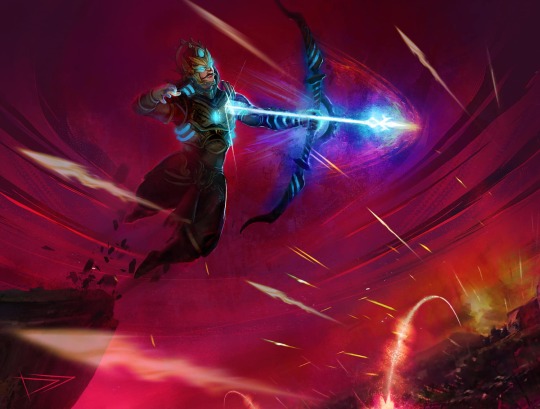

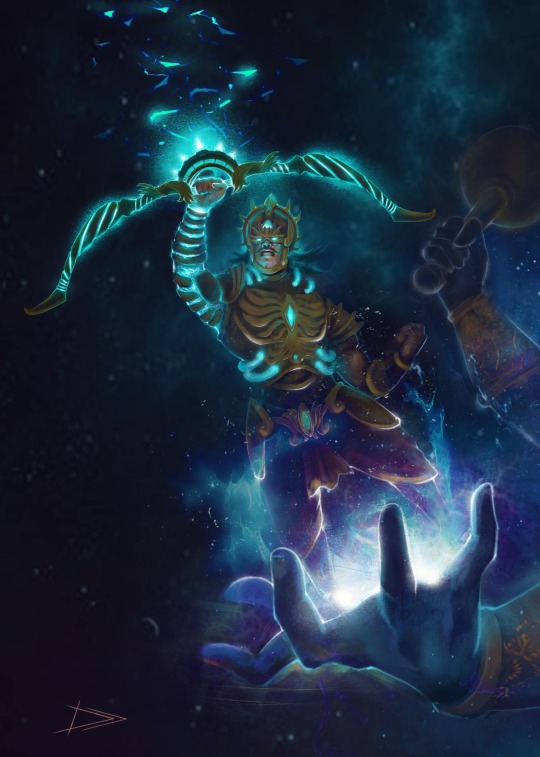
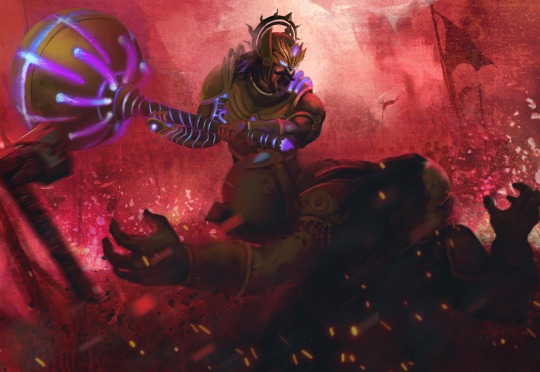


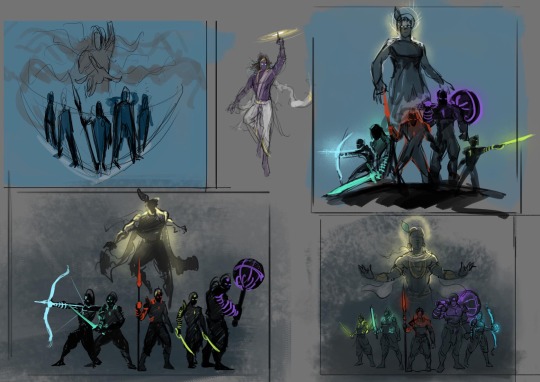
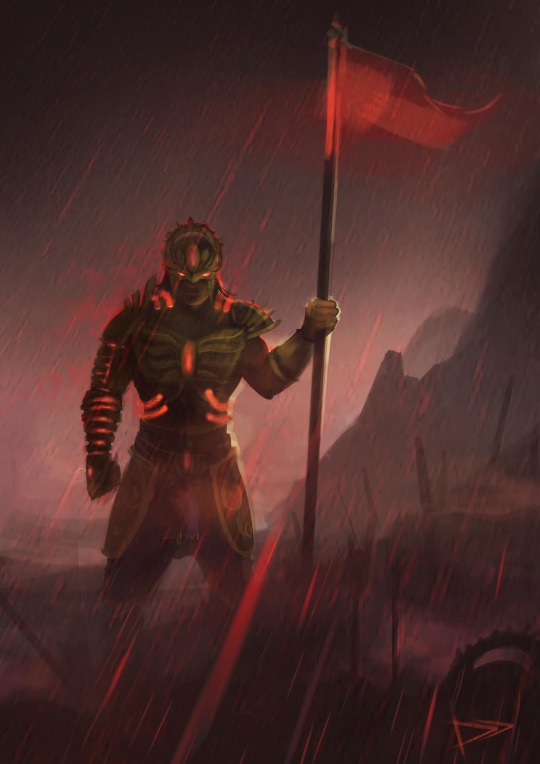

check out this stunning futuristic Mahābhārata art by Vamchi Vams!
the tendency with modern Mbh-inspired artwork is for it to still adhere to 'traditional' / historic conventions and for these to be seen as more 'accurate' renderings, but, especially with the war books (parvas), i'd maintain that one needs only to skim-read to see that the futuristic artwork most likely is a more 'accurate' representation of how the war is said to be fought. it would not be an exaggeration to claim that the astras (supranatural weapons imbued with mantras) used by warriors such as Arjuna, Karṇa & Aśvatthāmā functioned like nuclear weapons. i personally adore futuristic Mbh artwork because in my opinion it enlivens the epic & grounds it in our present as a timeless dynamic work and not as an ancient lifeless poem.
i do wonder if it is the inescapable archaic tone of 99% of the Mbh translations from sanskrit (which my dear friend Avi Sato pointed to me once & now i can't unsee!) that which contributes to this overall impression that traditional renditions * must * be more accurate. perhaps. i for one would love to see a truly futuristic translation and interpretation of the Mbh (both in literature & in film / TV) that also follows the narrative thread faithfully. might take it upon myself.
#mahabharata#mahabharat#mahabharatam#vamchi vams#hindu art#mahabharata art#krishna#govinda#gopala#hare krishna#haribol#arjuna#karna#pandavas#kurukshetra war#ashwatthama#itihasa#religion#sanskrit#bheema#yudhisthira#nakula#sahadeva#kurukshetra#hinduism#hindu mythology
33 notes
·
View notes
Text
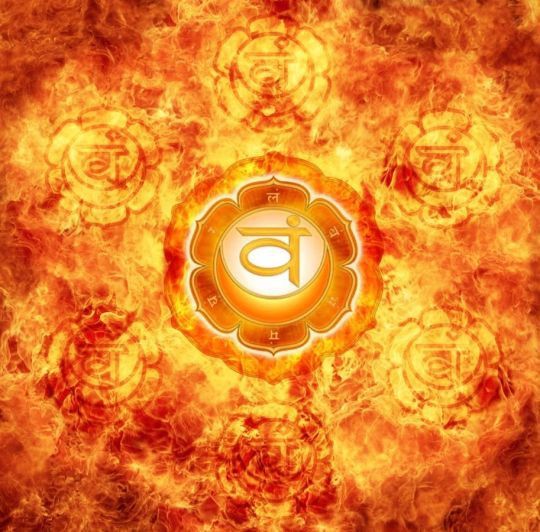
secondo chakra Svadhisthana
Posizione: Parte inferiore dell’addome
Funzione: Sessualità, emozioni, creatività
Colore: Arancione
Elemento: Acqua
Senso: Tatto e gusto
Cristalli e pietre: Ambra, citrina, topazio, opale, calcite arancione
Mantra: Vam
Nota: Re
Animale: Coccodrillo, serpente, pesce, rettili
https://www.meditazionezen.it
********************
second chakra Svadhisthana
Location: Lower part of the abdomen
Function: Sexuality, emotions, creativity
Orange colour
Element: Water
Sense: Touch and taste
Crystals and stones: Amber, citrine, topaz, opal, orange calcite
Mantra: Vam
Note: Re
Animal: Crocodile, snake, fish, reptiles
https://www.meditazionezen.it
5 notes
·
View notes
Text
Simple Steps to Activate Chakras in Your Body
Chakra activation is a fundamental aspect of yoga practice, aiming to harmonize the energy centers within the body for overall well-being and spiritual growth. Whether you are a seasoned practitioner or new to the concept, understanding and activating your chakras can profoundly impact your life. This guide will explore simple steps to activate your chakras and how to activate chakras in human body, like a 500-hour yoga teacher training in Bali or a 200-hour yoga teacher training online, can enhance this process.

Yoga Related Blogs:-
20 benefits of surya namaskar
why is kundalini yoga dangerous
12 poses of surya namaskar drawing
11 yoga poses for knee pain relief
1. Understand the Chakras
Chakras are energy centers located along the spine, from the base to the crown of the head. Each chakra is associated with different aspects of physical, emotional, and spiritual health. Here’s a brief overview of each:
Root Chakra (Muladhara): Located at the base of the spine, it governs stability and grounding.
Sacral Chakra (Svadhisthana): Found in the lower abdomen, it influences creativity and emotional balance.
Solar Plexus Chakra (Manipura): Positioned in the upper abdomen, it relates to personal power and confidence.
Heart Chakra (Anahata): Located in the center of the chest, it deals with love and compassion.
Throat Chakra (Vishuddha): Situated at the throat, it is responsible for communication and expression.
Third Eye Chakra (Ajna): Found between the eyebrows, it governs intuition and insight.
Crown Chakra (Sahasrara): Located at the top of the head, it connects with spiritual enlightenment.
2. Practice Yoga Regularly
Yoga is a powerful tool for activating and balancing chakras. Regular practice helps to open and align these energy centers. For those seeking an immersive experience, a 500-hour yoga teacher training in Bali offers advanced techniques and in-depth knowledge to refine your practice. Alternatively, a 200 hour yoga teacher training online provides a solid foundation for understanding chakra activation from the comfort of your home.
Recommended Yoga Poses for Chakra Activation:
Root Chakra: Try grounding poses like Mountain Pose and Warrior I.
Sacral Chakra: Practice hip-opening poses such as Bound Angle Pose and Pigeon Pose.
Solar Plexus Chakra: Engage in core-strengthening poses like Boat Pose and Plank.
Heart Chakra: Open your heart with poses like Camel Pose and Cobra Pose.
Throat Chakra: Enhance expression through poses like Shoulder Stand and Fish Pose.
Third Eye Chakra: Stimulate intuition with poses such as Forward Bend and Child’s Pose.
Crown Chakra: Meditate in poses like Headstand or Lotus Pose.
3. Meditate for Chakra Balance
Meditation is essential for chakra activation. Focused meditation on each chakra can help clear blockages and enhance their function. Consider guided meditations or visualization techniques that target specific chakras.
A 100 hour yoga teacher training online can provide valuable insights into meditation practices tailored to chakra activation. This training often includes techniques for enhancing your meditation skills, which can be crucial for deepening your practice.
4. Use Sound and Mantras
Sound vibrations and mantras are effective tools for chakra activation. Each chakra resonates with specific sounds and mantras:
Root Chakra: “Lam”
Sacral Chakra: “Vam”
Solar Plexus Chakra: “Ram”
Heart Chakra: “Yam”
Throat Chakra: “Ham”
Third Eye Chakra: “Om”
Crown Chakra: Silence or “Aum”
Incorporating these sounds into your practice can help balance and activate your chakras.
5. Adopt a Balanced Diet
Eating a balanced diet supports chakra health. Incorporate foods that correspond to each chakra’s color and element. For example, root vegetables for the Root Chakra and leafy greens for the Heart Chakra.
A comprehensive approach to your diet and lifestyle is often covered in advanced yoga teacher trainings like a 300-hour yoga teacher training online, where you can learn about holistic practices to support chakra health.
6. Seek Professional Guidance
For those seeking deeper knowledge, enrolling in a 500-hour yoga teacher training in Bali or a 300-hour yoga teacher training online can provide expert guidance on chakra activation. These programs offer advanced techniques and personalized support to enhance your practice.
Additionally, exploring different yoga traditions and philosophies, such as those found in Rishikesh, can provide unique perspectives on chakra activation. The rich spiritual environment in Rishikesh offers an ideal setting for deepening your understanding of energy centers.
Conclusion
Activating and balancing your chakras is a transformative journey that enhances your overall well-being. By incorporating regular yoga practice, meditation, sound, and a balanced lifestyle, you can align your energy centers and achieve greater harmony. For those looking to delve deeper, advanced yoga teacher trainings in Bali or online courses provide invaluable resources and guidance to further your practice. Embrace these steps and embark on a journey of self-discovery and energy alignment.
#100 hour yoga teacher training#500 hour yoga teacher training#surya namaskar#benefits of surya namaskar#300 hour yoga teacher training india#300 hour yoga teacher training#yoga teacher training
0 notes
Text
Kundalini Yoga assisted by Beeja Mantras
Friends, there is a seed mantra associated with each chakra. Om is associated with Sahasrara Chakra, Om or Sham with Ajna Chakra, Haam with Vishuddhi Chakra, Yam with Anahata Chakra, Ram with Manipura Chakra, Vam with Swadhisthana Chakra, and Lam with Muladhara Chakra. In this article we will try to understand the science related to them. The dot above the Beej Mantra is in the form of a Chakra.…

View On WordPress
0 notes
Text
"Real Realities." From the Jabala Darsana Upanishad. "The Exploration of the Mysteries of Goat Herd."

6. Now I will tell you about the five types of Dharana (holding steady - a stage in meditation - here we try to hold on what we are mediating upon without wavering).
6.1 In the sky which is in the middle of the body, Dharana of the sky outside should be made. Similarly in the breath, Dharana of air outside should be made. In the fire in the stomach, Dharana of the fire outside should be made.
6.2 In the fluid aspects of the body, Dharana of the water outside should be made. In the earthy aspects of the body, Dharana of the earth outside should be made.
6.3 Sage, also it is necessary to chant the pancha bhootha mantras viz., Ham, Yam, Ram, Vam and Lam. It is said that this very great Dharana destroys all sins.
Ham= I am
Yam=observant
Ram=delight
Vam=flowing
Lam=at play
All the trouble in the world comes from the imprint of very strange ideas upon a fixed and concrete world. We tell ourselves all kinds of stories about things, things that are just not true, never have been and never will be. This prevents us from developing the right emotions and thoughts towards the world around us.
The Upanishads say this is an easy thing to prevent through meditation. One must sit and stop the mind and see what happens when the world runs itself. Eventually the real world freely enter the mind, find a match with a real response and then life on earth will change.
0 notes
Text
శ్రీ లలితా చైతన్య విజ్ఞానము - 445 - 2 / Sri Lalitha Chaitanya Vijnanam - 445 - 2

🌹. శ్రీ లలితా చైతన్య విజ్ఞానము - 445 - 2 / Sri Lalitha Chaitanya Vijnanam - 445 - 2 🌹
🌻. లలితా సహస్ర నామముల తత్వ విచారణ 🌻
✍️. సద్గురు శ్రీ కంభంపాటి పార్వతీ కుమార్
సేకరణ : ప్రసాద్ భరద్వాజ
🍁. మూల మంత్రము : ఓం ఐం హ్రీం శ్రీం శ్రీమాత్రే నమః 🍁
🍀 94. కుమార గణనాథాంబా, తుష్టిః, పుష్టి, ర్మతి, ర్ధృతిః ।
శాంతిః, స్వస్తిమతీ, కాంతి, ర్నందినీ, విఘ్ననాశినీ ॥ 94 ॥ 🍀
🌻 445. ‘శాంతిః'- 2 🌻
త్రిగుణముల యందు పంచభూతముల యందు వసించు వారికి శాంతి యెట్లు కలుగును? అష్టప్రకృతులు కావల శాంతి యున్నది. దానిని పొందినవారు అష్ట ప్రకృతులలో కూడ శాంతియుతముగ వసింతురు. అష్టప్రకృతుల కావలయున్నది శ్రీమాతయే. ఆమె అనుగ్రహము పొందుటకు అనుస్మరణమే మార్గము. అనుస్మరణమే నిజమగు ఆరాధనము. అనుస్మరణమున శ్రీమాత సాన్నిధ్యమున వసించు వారికి సృష్టి యందెచ్చట నైననూ శాంతి లభింపగలదు. అట్టి శాంతి నిచ్చునది శ్రీమాత. అక్షరములలో చివరి ఎనిమిది అక్షరములను శాంతము లందురు. అవి వరుసగ య, ర, ల, వ, శ, ష, స, హ, ఈ ఎనిమిది అక్షరములు బీజాక్షరము లగుటచే శాంతి వర్ణములు. యం, రం, లం, వం, శం, షం, సం, హం. వీనిని రకరకములుగ 'ఈం' కారముతో చేర్చి ఋషులు మంత్రముల నేర్పరచిరి.
సశేషం...
🌹 🌹 🌹 🌹 🌹
🌹 Sri Lalitha Chaitanya Vijnanam - 445 - 2 🌹
Contemplation of 1000 Names of Sri Lalitha Devi
✍️ Prasad Bharadwaj
🌻 94. Kumara gananadhanba tushtih pushtirmati dhrutih
Shanti svastimati kantirnandini vignanashini ॥ 94 ॥ 🌻
🌻 445. 'Shantih'- 2 🌻
How can peace come to those who live in the trigunas and panchabhutas? Peace is beyond Ashta Prakriti. Those who attain it live peacefully even in Ashta Prakriti. The one beyond Ashta Prakritis is Sri Mata herself. Continuous remembrance of Sri Mata is the only way to get her grace. Remembrance is the only true worship. Those who dwell in the presence of Sri Mata through continuous remembrance of Her can find peace anywhere in the world. Srimata is the giver of such peace. The last eight letters of the alphabet are called shantamulu. They are Ya, Ra, La, Va, Sha, Sha, Sa, Ha. These eight letters are the symbols of peace as they are Bijakshara. Yam, Ram, Lum, Vam, Sham, Sham, Sam, Ham. Sages combined these in various ways with 'Eem' and created mantras.
Continues...
🌹 🌹 🌹 🌹 🌹
#శ్రీ లలితా చైతన్య విజ్ఞానము#lalitha chaitanya sahasranama contemplation#lalitha devi#prasad bharadwaj
0 notes
Text
Healing frequencies for emotions, organs and chakras
Now that we know a little about the science of sound, it’s easier to understand how it can be so beneficial. When we hear certain sound waves, this can encourage the brain to elicit certain brain waves that can help us feel relaxed, alert, focused, and even aid us in entering a meditative state. When the brain enters a relaxed and balanced state, this stimulates the parasympathetic nervous system (the ‘rest and digest’ system) helping the body’s organs and tissues rest, heal and regenerate.Sound frequencies can have healing effects on emotions, organs, and chakras. Certain sound waves can encourage the brain to elicit certain brain waves, helping us feel relaxed, focused, and meditative. When the brain enters a balanced state, the body’s organs and tissues can rest, heal, and regenerate. Sound healing can also release blocked energy from subtle energy channels, restoring emotional balance. Specific frequencies have different effects on the body and mind, such as relieving pain and stress, healing tissues and organs, and encouraging a sense of oneness. Traditional Chinese Medicine uses toning to bring the body and mind back into balance. Sound healing works directly with the Chakras, which have corresponding mantras to bring them back into balance.
As well as physical health, sound healing is also used to release ‘blocked’ energy from the subtle energy channels, restoring balance to our emotions too. Specific frequencies are linked to specific patterns in numerology and geometry, and are said to have specific effects on the body and mind, such as:174 Hz relieves pain and stress 285 Hz heals tissues and organs 396 Hz liberates the listener from fear and guilt 417 Hz facilitates change 528 Hz for transformation and DNA repair (known as the ‘miracle frequency’) 639 Hz reconnects relationships 741 Hz helps provide solutions and self-expression 852 Hz brings the listener back to a ‘spiritual order’ 963 HZ encourages a sense of oneness and unity
To experience the benefits of different frequencies, you can search for Binaural Beats online, which includes frequencies to elicit brainwaves like Delta for sleeping, Theta meditation, Alpha for reduced anxiety and more positivity, Beta for increased focus and problem solving, and frequencies to help improve motivation and learning too.
TCM – toning and healing sounds
As well as frequencies, health systems like Traditional Chinese Medicine (TCM) have used healing sounds and a method known as ‘toning’ to bring the body and mind back into balance. Toning uses the voice, and includes healing sounds such as:Lungs: “Ssssssssss” Kidneys: “Choooooooo” Liver: “Shhhhhhhhhh” Heart & Small Intestine: “Haaaaaaaa” Spleen & Pancreas: “Whoooooo” Triple Burner / San Jiao (the core or trunk of the body): “Herrrrrrrrrrr”
Chakras and Bija mantras
Sound healing also works directly with the Chakras. Imagine the 7 main energy wheels located up the spine, starting from the tailbone and ending just above the crown of the head. Each wheel needs to be ‘spinning’ optimally in order to help the body vibrate at a healthy frequency. If one wheel is ‘stuck’ or ‘blocked’, this lowers the body’s frequency and causes disharmony, dis-ease and maybe even disease. The 7 chakra points correspond to specific organs and hormones within the body, and it’s very common to have at least one or two chakra points that are blocked or not functioning optimally. Sound is one of the most powerful ways to help balance the chakras.
Each chakra has a corresponding mantra to help bring it back to balance, known a bija mantra or ‘seed’ mantra. Muladhara / Root Chakra: Bija mantra – “lam” (pronounced ‘lum’) Svadhisthana / Sacral Chakra: Bija Mantra- “vam” (pronounced ‘vum’) Manipura / Solar Plexus Chakra: Bija mantra – “ram” (pronounced ‘rum’) Anahata / Heart Chakra: Bija mantra – “yam” (pronounced ‘yum’) Vishuddhi / Throat Chakra: Bija mantra: “ham” (pronounced ‘hum’) Ajna / Third Eye Chakra: Bija mantra: “OM” Sahasrara / Crown Chakra: Bija mantra: Sahasrara Chakra is traditionally considered to be beyond all sound, but many people also use the mantra “OM” for this chakra.
1 note
·
View note
Text



Vairocana | The Five Wisdom Buddhas
Talon Abraxas
Not all Buddhas were considered flesh and blood or walked the earth. The Five Wisdom Buddhas are the Wisdom states as persons. The body of Vairocana is the body of the True Dharma.
The Five Wisdom Buddhas arose during the Mahayana development in India and were taken up by Tantric Buddhism. In Japan they appear in Shingon. These Buddhas differ from the Buddhas who appear in the lineage or who are said to have walked the earth at a certain time in a certain place as they represent principles of Mahayana teaching. They are sometimes called ‘Meditation Buddhas’ to distinguish them and because they may only be encountered in the states of meditation that form their bodies.
Vairocana is called the ‘Sun Buddha’ and is the ‘First’ (Skt. Adi) or ‘Primoridial’ Buddha and sits in the central place of the Five Wisdom Buddhas mandala surrounded by the four other Wisdom Buddhas who sit at the cardinal points. His name in Japanese is Dainichi Nyorai – The Buddha of Universal Illumination. His names and attributes are all connected with light and illumination, rays of life-giving power that initiate, nourish and sustain as the sun does all life on earth.
In Mahayana teaching his body is the Body of the Dharma (Skt. Dharmakaya), and is synonymous with such terms in Zen as ‘True Nature’, ‘True Face’ and ‘Buddha-nature’. His nature is emptiness (Skt. Sunyata), the ‘unborn’ of which the Buddha spoke in the Pali Canon, without which that which is born and created could not come into being.
Vairocana first appeared in the Brahmajala Sutra, a 5th Century manuscript written in Sanskrit and translated into Chinese by Kumarajiva. The title translates into English as Brahma’s Net Sutra. This relates to the analogy used by the Buddha who described a net that spreads throughout the universe in the three dimensions of space: length, breadth and depth. Where three strands meet there is a jewel to hold them in place like a dewy spider’s web. Each jewel reflects both itself and all the other jewels in the net simultaneously. The feel of this image is used to point towards the reality of emptiness, the true nature of the Dharmakaya – which is the body of Vairocana.
“Now, I, Vairocana Buddha, am sitting atop a lotus pedestal; on a thousand flowers surrounding me are a thousand Sakyamuni Buddhas. Each flower supports a hundred million worlds; in each world a Sakyamuni Buddha appears. All are seated beneath a Bodhi-tree, all simultaneously attain Buddhahood. All these innumerable Buddhas have Vairocana as their original body. “
-The Brahma’s Net Sutra
As the primordial principle Vairocana speaks outside the phenomenal world where all time is simultaneous. Although in the phenomenal world he has this or that name and is portrayed using this or that hand position (mudra), wearing certain garments and headdress, in truth he is beyond conceptual imagination and yet is ever present in each form, as Master Hakuin wrote: ‘‘like salt in seawater or glue in paint.”
In Shingon Buddhism he is represented by the Sanskrit letter ‘A’ which expresses life & death; emergence & return.
The mantra associated with Vairocana is:
Om a-vi-ra-hûm-kham vajradhâtu vam (Skt.)
Om All Pervading One; Imperishable One
30 notes
·
View notes
Text
Svadhisthana


Chakra sacro.
Se situa en el plexo sacro.
elemento: agua
color: naranja
bija mantra: Vam
demonio: culpabilidad
Derecho a sentir, desear, sensaciones, sentimientos, emociones, cambios vitales, placer, diversión, feminidad.
1 note
·
View note
Text
The Neanderthal Warburg disease phenotype can also be reversed by a high fibre diet. Pranayama involves stimulation of 3 channels: Ida- the left channel starting from the muladhara chakra in the tip of the spine to the left nostril, pingala- the right channel starting from the muladhara chakra in the tip of the spine to the right nostril and the sushumna central channel starting from the muladhara chakra to the sahasrara chakra crowning the head. The muladhara chakra is called the yukti triveni where the 3 channels intersect. The shakthi, the static unmanifest kundalini is guarded by the serpent who is coiled in three and half circles 539which closes the central channel with its mouth. Prana guides its circulating movements through the ida and pingala down to the base of the spine when Kundalini is awakened. The vital energies of opposing forces of ida and pingala will be united in the shakthi kundalini which is awakened rises up sushumna nadi and energises the 7 chakras. The 7 chakras are in the ethereal body and includes the muladhara chakra in the tip of the spine, the swadhisthana chakra in the genital area, the manipura chakra in the coeliac plexus, the anahata chakra in the cardiac region, the vishudhara chakra in the neck, the ajna chakra in the pineal gland and sahasrara chakra in the crown of the head. The uniting of the ida and pingala by pranayama awakens the kundalini and stimulates the various chakras regulating body functions. The stimulation of pingala produces right hemispheric stimulation, sympathetic hyperactivity and parasympathetic hypoactivity. The stimulation of ida produces left hemispheric stimulation, sympathetic hypoactivity and parasympathetic hyperactivity. The stimulation of sushumna awakens the kundalini and balances sympathetic and parasympathetic. Thus the stimulation of ida and sushumna can reverse the Warburg phenotype. Yogic pranayamic breathing techniques can modulate brain function and metabolonomics. It decreases sympathetic activity and increasing parasympathetic activity. Yogic pranayamic breathing technique can lead to decrease in sympathetic tone, decreased amount of stress hormones, stability of the gut blood barrier and reduction in colonic archaeal growth. This leads to reduction in archaeal endosymbiosis and preservation of the frontal cortex. Yogic physical exercises leads to AMPK activation and reversal of the Warburg phenotype. AMPK activation stabilizes gut blood barrier and reduces archaeal endosymbiosis. Yogic pranayamic breathing technique and physical yoga exercises leads to decreased archaeal endosymbiosis, reversal of neanderthalisation of species as well as reversal of the Warburg phenotype. Thus yoga exercises and postures as well as pranayama techniques help to reduce endosymbiotic and colonic archaea growth and reverse the Neanderthal Warburg phenotype. The chakras have got a sound correlate with the muladhara chakra stimulated by lam, svadhistana chakra stimulated by vam, the manipura chakra stimulated by ram and the anahata chakra stimulated by ham. Thus sounds, mantras and vedic chants can affect the chakras and regulate body functions.
1 note
·
View note
Text
Oracolo decreti quotidiani lasciamoci guidare dalle leggi universali sono la fonte di tutto!

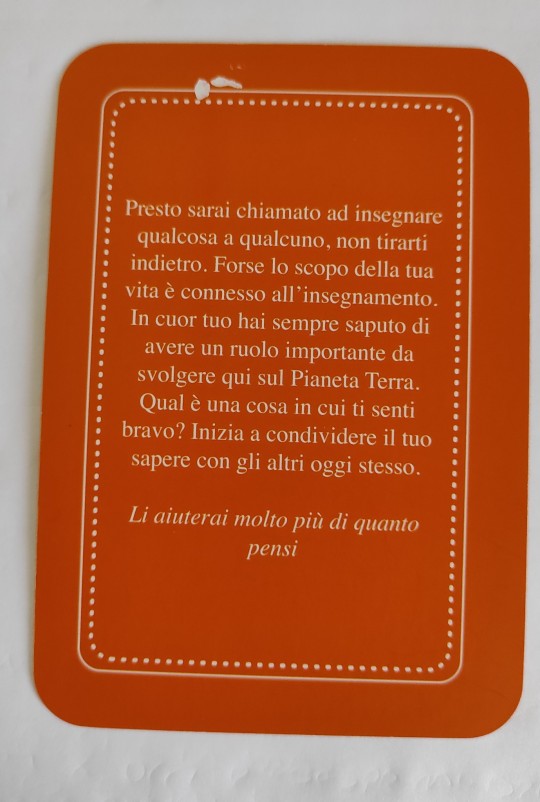
Il decreto per oggi! E se fossi io il maestro? Per questo sono qui oggi ! Ho una missione importante. Legge della conoscenza governato dal secondo chakra arancione Svadhisthana
**Posizione:** Parte inferiore dell’addome
**Funzione:** Sessualità, emozioni, creatività
**Colore:** Arancione
**Elemento:** Acqua
**Senso:** Tatto e gusto
**Cristalli e pietre:** Ambra, citrino, topazio, opale,Corniola
**Mantra:** Vam
**Nota: **Re
**Animali: **Coccodrillo, serpente, pesce
**Organi associati**: apparato genitale e sistema riproduttivo, intestino, reni,vescica, vertebre lombari, nervo sciatico
**frequenza:** 417
**Ghiandole:** Gonadi
**Cibo :** Arance, carote, zucca, mandorle, noccioline, semi
**Quote :** Io sento.
#oracolo#oracles#decretiquotidiani#leggi universali#decreti#chakras#yoga meditazione chakra#chakra#arancione#secondo chakra#Svadhisthana#sessualità#seduzione#spiritualteacher
0 notes
Photo

Frecuencias de Solfeggio. ❤1er Chakra (CHAKRA RAÍZ): 396 Hz Nombre: MULADAHRA - Mantra: LAM - Color: Rojo 💎Frecuencia para liberar el miedo y la culpabilidad. 🧡2°Chakra (CHAKRA SEXUAL): 417 Hz Nombre: SVADHISTHANA - Mantra: VAM -Color: Naranja 💎Frecuencia para deshacer las situaciones y crear el cambio. 💛3er Chakra (PLEXO SOLAR): 528 Hz Nombre: MANIPURA - Mantra: RAM -Color: Amarillo. 💎Frecuencia para la transformación y los milagros. Repara el ADN. 💚4°Chakra (CHAKRA DEL CORAZÓN): 639 Hz Nombre: ANAHATA - Mantra: IAM -Color:Verde. 💎Frecuencia para la conexión y relaciones. 💙5°Chakra (CHAKRA DE LA GARGANTA): 741 Hz Nombre: VISHUDHA - Mantra: JAM -Color: Azul. 💎Frecuencia para expansión de conciencia. 💜6°Chakra (CHAKRA DEL TERCER OJO): 852 Hz Nombre: AJNA - Mantra: KSHAM -Color: Violeta. 💎Frecuencia para despertar la intuición. 🤍7°Chakra (CHAKRA CORONA): 963 Hz Nombre: SAHASRARA Mantra: OM - Color: Blanco. 💎Frecuencia para el orden espiritual. https://www.instagram.com/p/CkzTWj7A7OH/?igshid=NGJjMDIxMWI=
0 notes
Text
Segundo chakra: Svadhisthana
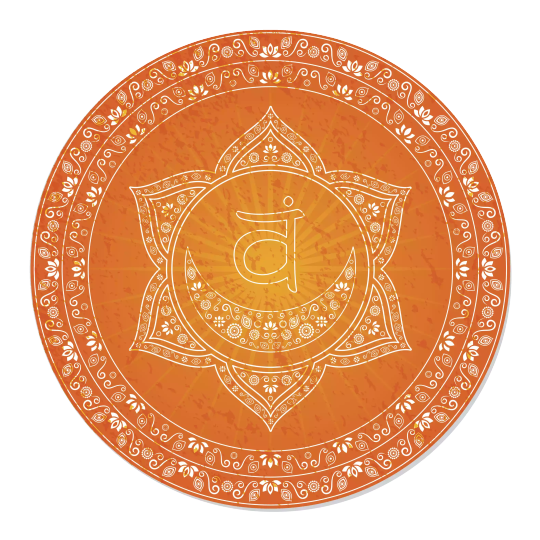
Elemento: Agua
Polaridad: Femenina
Sentido: Gusto
Mantra: VAM
Color: Anaranjado
Expresión mental/ espiritual: magnetismo, asombro, fluidez, sensualidad
Expresión corporal: riñones, vejiga, caderas, cavidad pélvica, genitales, órganos reproductivos, todos los humores, sangre, linfa, jugos digestivos y esperma
El segundo chakra (Svadhisthana) está ubicado en la zona del vientre, a unos dos centímetros por debajo del ombligo y tiene las cualidades del agua. De ella brota la vida, la energía creativa, la transformación y la capacidad de revitalizar y sanar. Si el primer chakra es la raíz (Muladhara), representando la seguridad y la estabilidad sobre las que construimos nuestra fuerza fundacional, este chakra complementa la pulsión de vida con la alegría, la pasión y el disfrute por la vida. Contrario al primer chakra que tiene una vibración masculina, este se inclina hacia las facultades femeninas de fecundidad, apertura, percepción, sensualidad y adaptación. No es gratuito que en la tradición hindú, este sea el centro energético de Shakti, que es la forma femenina de Shiva, los dioses de la energía creativa y destructiva, respectivamente.
La vibración de Svadhisthana chakra está relacionada con la sexualidad como una fuerza creativa, diferente al instinto de supervivencia encaminado a la necesidad de reproducción. También parte de este centro energético la sensualidad, entendida como el despertar de los sentidos, a través de los cuales honramos a nuestro ser físico y percibimos el mundo, la capacidad de goce en el momento presente que nos permite sentirnos conectados con la vida. Si el primer chakra es la fuerza vital, el segundo chakra es esta energía en movimiento y en creación permanente.
La capacidad de asombro y el vivir el momento presente son parte de este chakra. Ver la vida como un juego creativo que está en una construcción permanente, que debe ser reinventada siempre, es estar conectados con esa parte de nosotros que dejamos atrás cuando asumimos un rol adulto en el mundo. Cuando estamos creciendo experimentamos el mundo como algo nuevo a cada segundo y nos maravillamos con cada pequeño descubrimiento que hacemos a través de nuestros sentidos, y que, paulatinamente a medida que envejecemos, se va perdiendo. El placer sensorial es una manera de dejar de lado los prejuicios y preceptos que nos hacen creer que ya todo es conocido.
Precisamente, porque si la existencia tiene una naturaleza que el misticismo del yoga y de otras tradiciones espirituales como el budismo reconocen, es el movimiento constante, como el agua. Nada es permanente, ni nosotros ni el entorno, porque todo lo que existe es energía que está siempre en transformación. Este chakra nos permite fluir con la vida, aceptar los cambios sin apegarnos y aceptar cada instante como un regalo. La fluidez del agua y sus cualidades purificadoras se representan en el cuerpo como algunos de los mecanismos de limpieza, liberación y desintoxicación que tenemos: las lágrimas, el semen, los riñones, la vejiga.
Experimentar la vida como un milagro constante (como el bello poema de William Blake) es estar sintonizado con nuestro segundo chakra. Nos abre la puerta a la belleza, al gusto por la vida y a las nuevas experiencias. No importa el llamado de cada uno o los principios, compromisos y voluntad, siempre se puede ver la vida a través de estar imbuido en el momento, a través del asombro y la apertura permanente.
La sensibilidad emocional es tan importante en este proceso de sintonía con la existencia porque implica una receptividad a las sutilezas del ambiente. Las emociones nos permiten experimentar la vida con plenitud y asimilar sus matices. Cuando somos sensibles estamos abiertos a conmovernos con la belleza, al placer sensorial y estético que forma parte de la pasión por la vida y toda la exuberancia, la belleza y la magia que ofrece. Nos importan los procesos más que los objetivos.
Por medio de este chakra podemos saborear la vida en cada momento, disfrutar los colores, la música, la belleza en el arte, lo que nace de la tierra, las personas y toda la existencia como una manifestación exuberante y mágica de la divinidad. Es gratitud y compenetración con el momento y lo que ofrece, pues esta vibración no solo nos vuelve más receptivos, sino que representa el magnetismo hacia el mundo que nos permite relacionarnos con las energías de los demás, y atraer lo que nos alegra y satisface. Es dejar que la incertidumbre sea emocionante y que fluya como debe ser porque siempre te traerá nuevas maneras de disfrutarla, nuevos momentos sublimes en los que la belleza de la tierra se conectan con el misticismo y que cada cosa es una manifestación de esta unidad y gozo.
Los síntomas del segundo chakra bloqueado pueden ser: represiones sexuales, rigidez, antipatía, miedo al disfrute, desprecio hacia todo lo sexual, aislamiento y enfermedades en el sistema reproductor y urinario.
Para abrir el segundo chakra tenemos que tener en cuenta que su elemento es el “agua”, el sónido del agua y su esencia es fundamental para conectarnos con este centro de energía. Las terapias con cristales y piedras preciosas, colores, esencias y sonidos también son efectivas. Además de la visualización del color anaranjado, mientras se recita el mantra VAM y se hace la posición de manos del Mudra Dhyani durante la meditación.

#charka#charkas#svadhishthana#yoga#sanación#sanacion#sanación espiritual#espiritualidad#mudra#mudras#mantra#sacro#chakra sacro#VAM#mantra Vam#mudra dhyani#segundo chakra#svadhisthana chakra#agua#elemento agua#dhyani mudra
15 notes
·
View notes